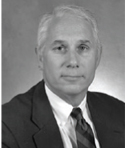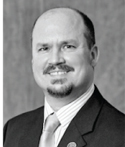April 2014
Going Global
A number of US organizations are working to facilitate PE licensure for international candidates and aid the mobility of domestic PEs overseas.
BY EVA KAPLAN-LEISERSON
 As engineering increasingly becomes a profession that crosses international borders, a number of organizations have initiated efforts to not only facilitate the flow of engineers and projects but also to ensure rigorous standards of competence and professionalism.
As engineering increasingly becomes a profession that crosses international borders, a number of organizations have initiated efforts to not only facilitate the flow of engineers and projects but also to ensure rigorous standards of competence and professionalism.
Groups in the US are no exception. Their work is helping to provide global citizens access to the US licensure system. In addition, initiatives and partnerships benefit domestic PEs whose qualifications become better recognized overseas. That enhances the ability of US professional engineers to work internationally.
Education
In recent years, US educational accreditor ABET has been working with an increasing number of programs in other countries.
ABET first began accrediting international programs in 2007, based on demand from global partners. (Previously, it evaluated programs by request to determine if they were “substantially equivalent.”) Overseas programs now comprise 10% of the organization’s total portfolio; 283 are in engineering.
According to executive director Michael Milligan, P.E., the largest number of programs are in the Middle East, with additional significant activity in Latin America and Asia.
He explains that ABET is recognized as a gold standard throughout the world, and that institutions that want to attract students, faculty, and industry support use the accreditation to demonstrate the quality of their education. But having an ABET-accredited degree also eases the path to becoming a PE.
ABET’s global efforts offer benefits at home as well. As an importer of technical talent and consumer of global technology, the US gains from initiatives to ensure quality workers and products overseas, Milligan notes.
The accrediting process is just the same overseas as it is domestically. However, ABET does ask institutions to coordinate their request with their in-country accreditor or overseeing body to ensure the work is welcomed.
It’s common that institutions may be dual-accredited, Milligan explains, as an “additional seal of approval.”
Milligan predicts that more programs will reach out to ABET for accreditation. “I don’t imagine the international growth will slow down anytime soon,” he says. “We only accredit a fraction of the programs currently.”
However, he acknowledges that not all programs need to be ABET-accredited, since other quality systems exist. “Part of the effort to raise the quality of engineering education worldwide is to develop those partnerships,” he says.
ABET has signed a mutual recognition agreement with Engineers Canada and participates in the International Engineering Alliance, which comprises three educational accords and three competence agreements. The Washington, Sydney, and Dublin Accords recognize substantial equivalency of educational programs for professional engineers, engineering technologists, and technicians, respectively.
The accords benefit both engineers wanting to achieve US licensure and US PEs demonstrating credentials in other signatory nations.
Exams
Mobility of professional engineers is an important issue for the National Council of Examiners for Engineering and Surveying and a key part of the organization’s strategic plan. As the council’s CEO, Jerry Carter, puts it, “mobility is the foundation for NCEES. It’s why we were created in the 1920s.”
That means not only mobility within the US, but also outside of it. The council needs to venture outside the country’s boundaries, says Carter, because of the global nature of today’s work.
NCEES first offered overseas exams in Japan in 2006, taking over administration there from the Oregon State Board of Examiners for Engineering and Land Surveying, which had provided the exams at the request of the Japan Technology Transfer Association.
NCEES signed an agreement with the nonprofit Japanese PE/FE Examiners Council (JPEC) to continue the exams. Another with the Korean Professional Engineer Association (KPEA) soon followed. “We found we were dealing with professionals with the same values and professionalism as [in the US],” says Carter.
In December, NCEES renewed its examination agreement with JPEC during a ceremony in Tokyo. NCEES also has agreements to offer the FE and PE exams in Canada, Saudi Arabia, the United Arab Emirates, Egypt, and Turkey. Discussions are in the works for additional countries in Asia and the Middle East.
Carter says one of the driving forces behind the growth in international exams has been the increase in ABET accreditation overseas. Once organizations become accredited, they’ve been interested in accessing the FE exam as an outcomes assessment tool. “That always leads to, ‘but we also want to afford [candidates] the ability to pursue licensure,’” he explains.
Licensure
According to Carter, it’s becoming more common for people outside of the US to be interested in obtaining the PE. He says that candidates who take the US licensing exams overseas may work for international firms that require the credential. For other applicants, obtaining the PE license is not required but is viewed as an honor.
Like Milligan, Carter believes the US system is becoming a de facto standard. However, as ABET does, NCEES participates in the International Engineering Alliance, in particular the agreements recognizing the substantial equivalence of individuals’ competencies.
For instance, the International Professional Engineers Agreement (IPEA) creates the framework to establish an international standard of competence for professional engineering. Its members maintain individual registers of engineers that meet international standards and are entitled to the credential International Professional Engineer (IntPE).
Engineers can qualify for their country’s register if they hold a Washington Accord-recognized degree or equivalent, earn seven years of practical experience (including two years in responsible charge), and maintain continuing professional development. In the US, about 500 people participate in NCEES’s register.
Basil Wakelin, CPEng (chartered professional engineer in New Zealand) and IntPE, is the chair of the International Engineering Alliance and the International Professional Engineers Agreement. He says the international agreements are raising the global standard through benchmarking, as well as easing the flow of engineers.
But Wakelin points out that there are differences around the world as to what constitutes an engineer. “In some countries there is no professional engineering body at all,” he says. “They understand engineering qualifications, but the development of professionalism is in its infancy.” The benefit of the registers, he says, is that individuals from countries whose national standards might not meet the criteria can still belong.
According to Carter, those countries with less formal or rigorous systems are often interested in the US licensure system.
As NCEES signs agreements to offer its exams overseas, the council must clarify for both partners and candidates that the US licensure process is quite different from that of other countries with nationalized systems. Passage of the exams is only one step in the process and obtaining a license in this country still requires application through a state board, due to the sovereign rights of individual states.
“We’re unique in that aspect,” says Carter. “I’m always having to explain that to foreign associates.”
State Boards
Some licensing boards have been paving the way for US licensure for overseas candidates. For instance, the Oregon board offers registration to international engineers with equivalent qualifications who have passed the FE and PE exams.
These international engineers are not only required to meet the same standards as domestic applicants but also must comply with the state’s continuing professional development requirement. It’s critical to maintain consistency regardless of an individual’s location, says board administrator Mari Lopez.
She explains that welcoming international candidates helps ensure responsible practices and safer projects, regardless of location. “Public safety improvements and economic growth aren’t fully realized if international borders are treated like barricades,” she says.
The Texas Board of Professional Engineers has been involved with international mobility issues over the last 15 years, including signing mutual recognition agreements with Engineers Canada and the Mexican government through the North American Free Trade Agreement (NAFTA) and with Engineers Australia through the Australia-United States Free Trade Agreement (AUSFTA).
These agreements allow engineers who are currently licensed in their own countries to apply for a temporary one-year license in Texas in order to provide mobility for project work. The temporary license can be renewed for a total of three years, explains board executive director Lance Kinney, P.E. After that, applicants must apply through the standard process.
The Texas board, along with the boards for North Carolina and Kentucky, also recently signed a memorandum of understanding with JPEC. This doesn’t change the standard requirements for licensure, but simply puts the cooperation in writing.
Some states have regulatory requirements that impede international candidates, such as a minimum six months of residency or the need for a social security number. NCEES had assisted JPEC in identifying state boards with requirements that would allow their candidates to apply for licensure and with processes to evaluate their experience. (Once international candidates have obtained an initial PE, they can often receive additional licenses in those states with more stringent requirements.)
According to Gene Hirose, P.E., JPEC’s liaison officer, the organization hopes to smooth the application process for candidates and plans to sign agreements with other state boards that are willing.
Although Japan does have its own longstanding professional engineer credential (P.E. Jp), Hirose explains that obtaining the US license enables the country’s citizens to join the cadre of “overseas-qualified” engineers.
According to Carter, the Texas Board of Professional Engineers has been the most progressive with international licensure so far. Like the Oregon board, the Texas board is also motivated by the desire to better protect citizens. “If it’s difficult for overseas engineers to get licensed [in this country], they may work [here] in an unregulated way,” Kinney notes.
But the agreements also facilitate opportunities for Texas engineers to work overseas. For instance, Kinney says more Texas engineers have gone to work in Australia than Australians have come to Texas.
Lessons Learned
Washington is another state that has worked to facilitate international licensure and mobility. The Washington State Board of Registration for Professional Engineers and Land Surveyors has received license applications from Canada and Japan, and grants the PE to candidates who have fulfilled the same processes as US candidates.
However, the board recently got into a sticky situation with candidates from Egypt. The board offered those applicants comity licensure based on the passage of NCEES exams, qualifying education and experience, and a credential from the Egyptian Syndicate of Engineers, which the Washington Board believed to be equivalent to the US license.
However, upon closer examination, the board realized that the organization is more like a union or professional association rather than a licensing body. With that discovery, the board then had to individually examine credentials to determine whether they met the qualifications for initial licensure by Washington.
“[The situation] forced us to pay very close attention to the differences that exist in the global arena,” explains executive director George Twiss. Determining the reliability of information at global distances is probably the single biggest challenge to the international mobility effort, he believes.
Roadblocks and On Ramps
Navigating individual state requirements can be a tricky process for those in other countries. For instance, Washington’s rules require anyone outside of the ABET system to get prior board approval before taking the Fundamentals of Engineering Exam.
If an overseas applicant has an ABET-accredited degree, the educational part of licensure is straightforward. But Milligan says ABET encourages state licensing boards to also recognize the graduates from programs participating in the Washington Accord (some will, but some will not), since a lot of effort goes into verifying the consistency and quality of those accrediting systems.
Candidates outside the ABET system can also have their education evaluated by a credential evaluating service—such as NCEES’s. This is a course-by-course evaluation to determine if the degree is equivalent to a US one.
But even candidates from countries with licensing systems similar to the US still have to apply and meet the requirements of individual states. The US system doesn’t provide for automatic equivalency, Carter explains, due to the decentralized nature of licensure. At a minimum, candidates will have to take NCEES exams.
Although there is no permanent one-to-one equivalency of international licenses in the US, the international agreements aim to help the process.
The International Engineering Alliance’s Wakelin believes that bilateral agreements between countries (or countries and states in the case of the US) can be cumbersome and expensive. Instead, he emphasizes a global standard, even if it doesn’t result in automatic transference of credentials. “At least people can say, ‘I know what it means.’ They might impose additional conditions…but the base experience is recognized.”
Moving Forward
Despite efforts to ease the process, questions about international licensure and mobility remain.
According to Wakelin, the alliance is in the early stages of reviewing whether national systems’ equivalency can be judged versus individual engineers’ competencies. He believes that will be easy for some systems, but more difficult for others.
The Washington board’s Twiss has worked on NCEES’s Foreign Experience Evaluation Task Force, which is developing recommendations to the council about a clearinghouse that would help support overseas licensing processes and requirements of member boards. “Instead of a search on the Internet, it would be a clearinghouse hosted by NCEES to give us a far more reliable source of info,” says Twiss.
But he brings up disciplinary action as a concern—how will state regulatory systems address misbehavior of foreign candidates? “Is there a remedy to protect the public if behavior is unacceptable to standards?” he asks.
Still, Twiss is a supporter of international mobility. “Common sense dictates that the whole world community is merging,” he says. “Everybody is a keyboard away.”
Carter says that NCEES has been trying to educate member boards about the need to think outside of not only state but also national boundaries to eliminate obstacles that are just bureaucratic and don’t add to public protection.
The council has found that all the international partners they’ve worked with have shown the highest degree of professionalism, he says, and the same motivation to practice ethically.
And, Carter says, for US engineers, it’s not enough to be licensed in a couple of states now. “You’re going to have to grow, look worldwide for business. It’s just going to be [required for] the engineer of the future.”
 NSPE Aids International Cooperation
NSPE Aids International Cooperation
NSPE has played a key role in advancing global cooperation and international mobility of engineers.
For instance, the Society has signed affiliation agreements with the Japan Society of Professional Engineers, the Society of Professional Engineers (UK), and the Korean Professional Engineers Association. These agreements encourage eligible members of the groups (those licensed in the US or other countries, graduates of ABET-accredited programs, and graduates of ABET-equivalent programs) to become NPSE members. In return, NSPE promises to provide these groups the same services as chapters of NSPE member state societies.
Members of the Japanese and Korean affiliate societies attend NSPE annual meetings, and the NSPE president regularly visits those countries.
The Japan Society of Professional Engineers also provided extensive review comments on a draft of NSPE’s new Engineering Body of Knowledge.
In addition, NSPE has been an important part of advancing the US licensure system around the world by helping to facilitate meetings and discussions among cooperating partners.



 JERRY CARTER
JERRY CARTER LANCE KINNEY, P. E.
LANCE KINNEY, P. E.